My wife and I live about 15 minutes from a gently flowing river perfectly suited to canoeing, but for a long time we didn’t paddle often because loading the canoe into the truck was a two-person job that took nearly 30 minutes.
To make the task easier, I decided to store the canoe above the overhead-door tracks in our 12′-high garage directly above a parking bay. To raise and lower it directly into the truck bed, I installed a worm-drive, double-reel winch. The winch is operated with a cordless drill at the end of a 6′ pole. It’s easy up, easy down, no sweat, and no lines have to be routed from the ceiling and down a wall to a cleat or a winch with a ratchet. The winch is self-locking, making it very safe to use because the boat is locked in place when the worm gear stops turning. Moving the canoe between the ceiling and the pickup is now a one-person job that takes less than five minutes.
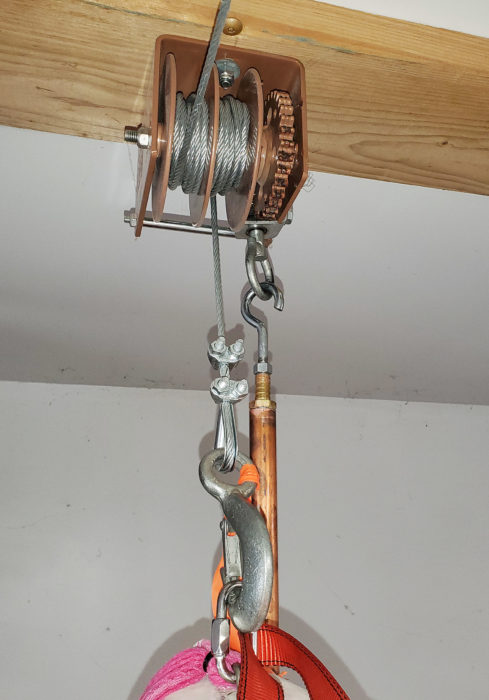 Photographs by the author
Photographs by the authorThe winch, suspended from the ceiling from a 4′ length of 2×6 board, is operated from the floor. The author made a 6′ pole out of copper tubing, with a hook at one end and a square drive at the other. The hook end attaches to the gear of the winch, while the square drive is connected to a cordless drill that rotates the pole and thus turns the winch.
The installation is neither complicated nor costly—roughly $200 in 2014. The key component is the loop-drive Dutton-Lainson worm-gear winch with a split reel that has a capacity of 21′6″ of cable on each side of the centered divider.

On a second board, also long enough to span three ceiling joists and mounted 12′ from the winch board (a distance dictated by the 13′ canoe’s lifting points), is a flanged block with 3″ sheave. The cable is led through this block and ends in another hook that attaches to a padeye on the canoe.
The load is spread over three ceiling joists in the garage ceiling by bolting the winch to a 4′ length of 2×6. Carriage bolts, washers, and Nylok nuts attach the winch to the board. In turn, the board is attached to the joists with six structural screws. The fixed-flange cable block with 3″ sheave is bolted to a second 4′ 2×6, also screwed to the ceiling joists. Spacing between the winch and turning block is dictated by the boat’s lifting points and clearance to garage door in the raised position. My 13′ canoe has 12′ between lifting points, and that determined the distance between the winch and turning block. I used a 50′ galvanized 3/16″ 7×19 replacement winch cable with a hook attached. The tail end of the cable is routed up around the turning block, over to the winch, through holes in the winch drum axle and center flange, and then straight down. A second hook is then attached with a thimble and two wire-rope cable clip clamps to the cable’s free end.
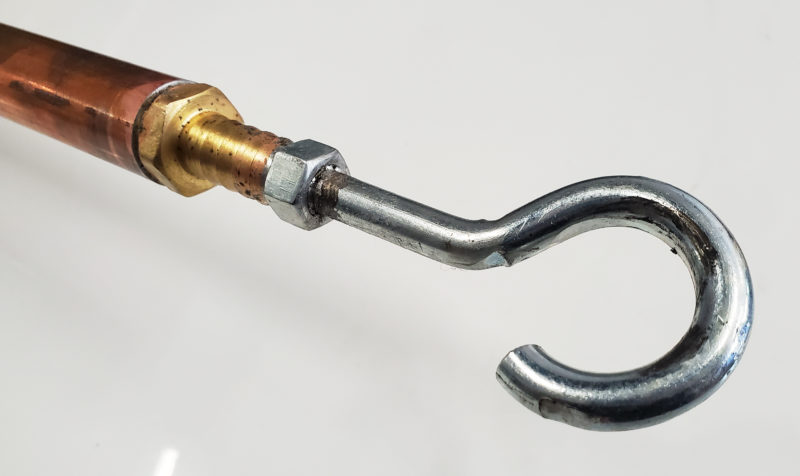
The hook (simply an eyebolt with a piece cut away) sits in a brass barbed hose fitting that fits inside the copper tube. The eyebolt, barb, and tube were all soldered together to ensure the hook remains centered.
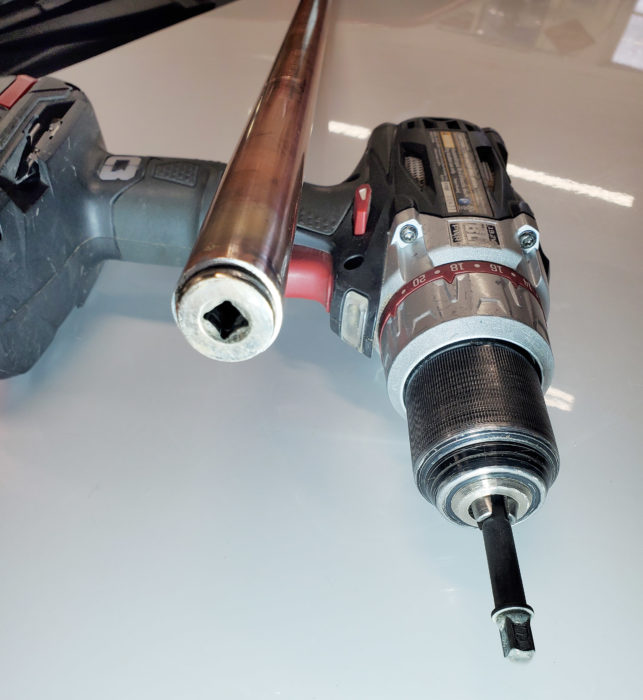
The bottom end of the pole has a 1/4″ square drive, which takes a 1/4″ adapter from the cordless drill. When raising or lowering the canoe, it is best to use the drill on the low-speed setting—41 pole rotations raises the canoe 1′.
To operate the winch from the floor, I made a pole from a 6′ length of 3⁄4″ copper pipe (nominal, outside diameter of 7⁄8″) with a hook on the top end and a 1⁄4″ square drive on the bottom end. The drive hook is an eyebolt with a piece cut away. A brass barbed hose fitting, which fits inside the copper tubing, is used on the top end to center the eyebolt in the tubing. I cleaned and fluxed these parts and soldered them together. At the bottom end of the pole, an orphan 1⁄4″-drive socket with an outside diameter just smaller than the inside diameter of the pipe is slid into the pipe and soldered in place. A 1⁄4″ square-drive adapter connects the cordless drill to rotate the pole. The drill is best operated in its low-speed setting.
The torque required to raise the canoe is low, so a skylight hand crank with a hook end is a ready-made option to operate the winch. At the top of travel, 41 turns raise the canoe 1′. More turns are needed at the bottom of travel when fewer layers of cable are on the reels. The lift distance from the canoe’s storage position to sitting in the truck bed is 6′, requiring between 250 and 300 revolutions.
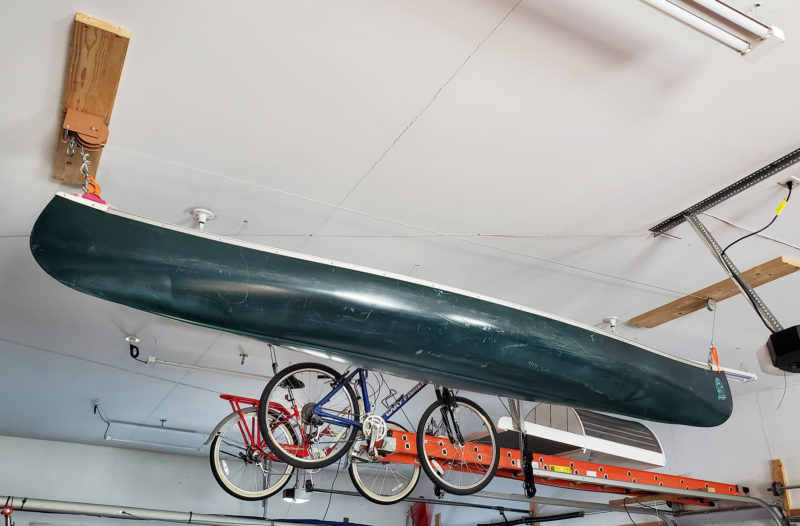
Thanks to the new hoist, one person can easily maneuver the canoe into and out of the pickup truck, and, when it’s not in use, the canoe is stored out of the way, well above head height.
The winch has a maximum weight capacity of 1,500 lbs, so the 2×6 crosspiece to which it’s mounted is likely the weakest link. While this hoist may be overkill for our lightweight canoe, I am very happy with it. It does all the heavy and awkward lifting and gets us out canoeing frequently and with ease.![]()
Joe Whitehead, a retired automotive engineer, lives outside Ann Arbor, Michigan. He started sailing off the beach on Lake Michigan as a teenager and now sails on Lake Erie. Joe enjoys restoring and modifying trailerable sailboats. His latest project, a rescued Sanibel 17, THREE SHEEPS TO THE WIND, will be launched this spring.
The WG 150 worm-gear winch, item #10956, is available from Dutton-Lainson for $114.99; Q C Supply lists it for $81.18; Etrailer.com lists it for $89.21.
You can share your tips and tricks of the trade with other Small Boats Magazine readers by sending us an email.



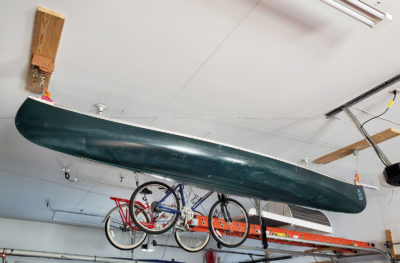

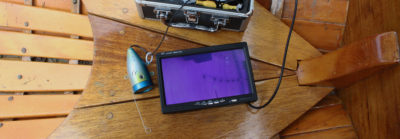
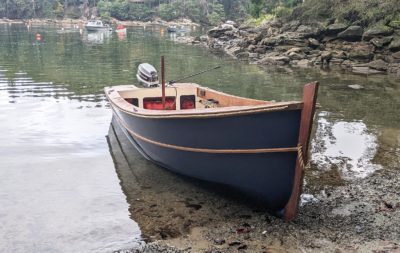
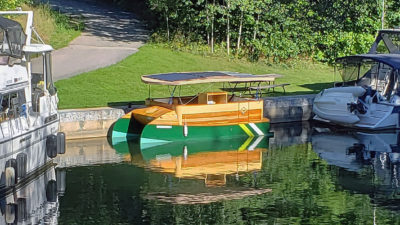
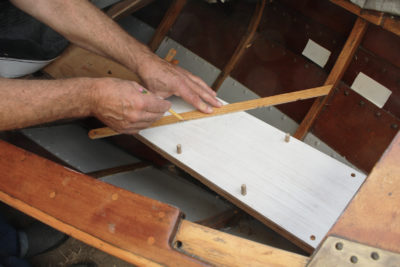
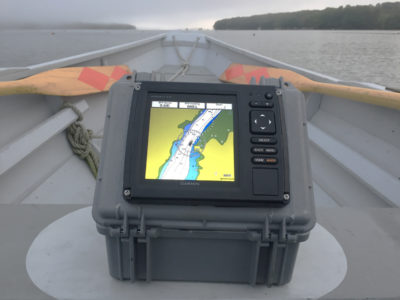
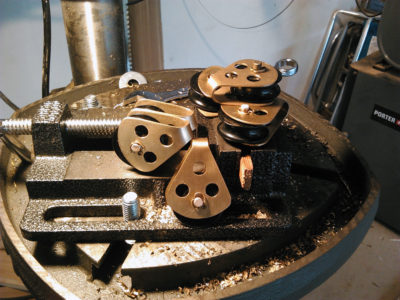

As long as you can manage without it at the launch!
This is nice, certainly easier than the trailer winch I have mounted to a stud in my garage with which I lift several-hundred-pound boats. I might need an upgrade. I have spreader bars and use webbing slings under them as these are wooden boats. To help keep any hogging issues from happening I have a couple of fixed slings that I hook up once the boat is lifted; then I just back off a little bit to let them take some of the weight. They also provide safety.
I had to think about fore and aft placement as my overhead garage doors intrude into the boat space. So I mounted the hoists far enough back from the door so that the door goes over the ends of boat when hoisted. The door is basically in between the boat and the overhead beams. Boat ends up a little lower than I’d like with the bottom only 6′ or so off the garage floor.
With a bit of complex rigging and carabiners, I have set up my winch to be able to handle either one of two boats by transferring the hoisting line.
Neat idea, I’ve often thought of using cordless tools as drive motors for applications like this. I’d want to replace the steel rope on the winch with a synthetic though and downsize the lifting hooks on the ends.
Good call, synthetic rope and downsized hooks would be definite improvements.